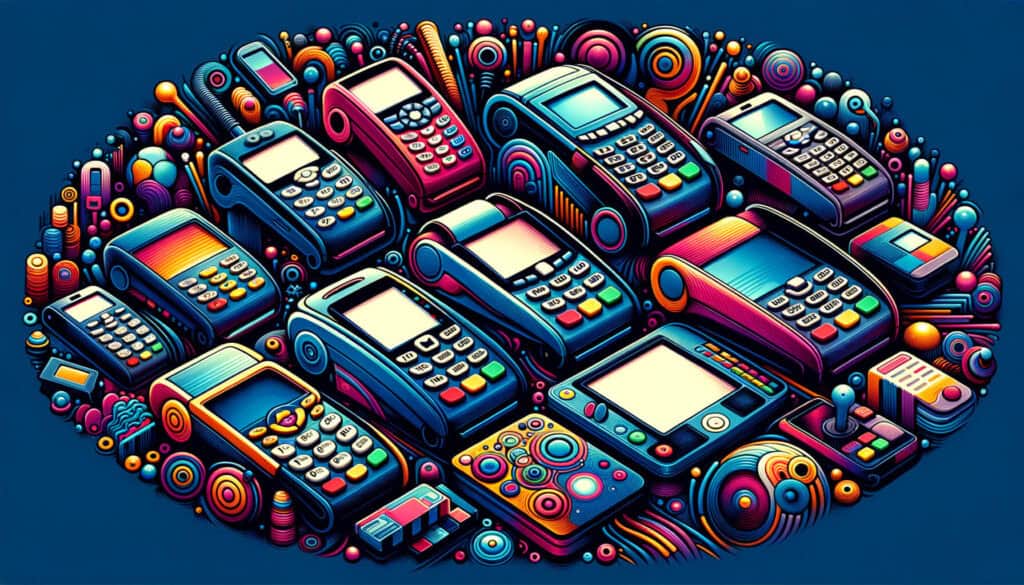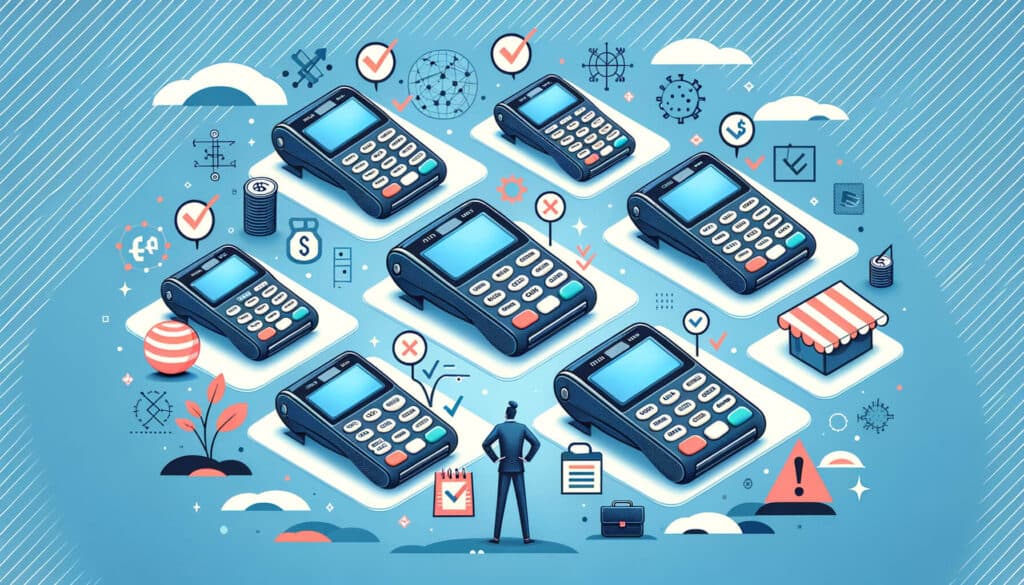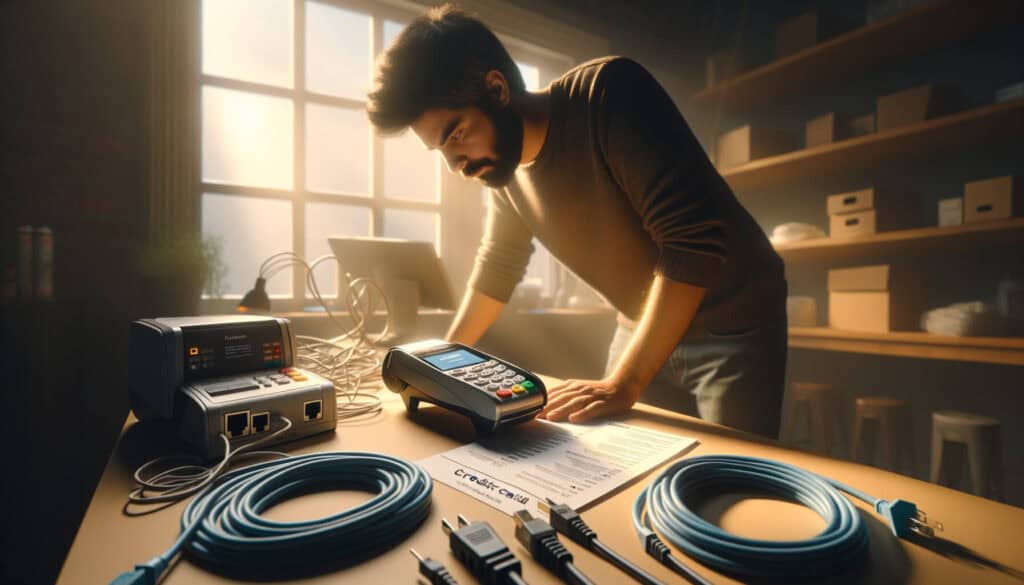
By Amanda Hoglund November 9, 2024
In today’s digital age, credit card terminals have become an essential tool for businesses of all sizes. Whether you run a small retail store or a large restaurant chain, having a reliable and efficient credit card terminal is crucial for accepting payments from customers. However, if you’re new to the world of credit card terminals, understanding how they work and choosing the right one for your business can be overwhelming.
This beginner’s guide aims to demystify the basics of credit card terminals, providing you with a comprehensive understanding of their functionality, types, features, and troubleshooting.
Understanding How Credit Card Terminals Work
To grasp the concept of credit card terminals, it’s important to understand the underlying process of how they work. When a customer makes a purchase using a credit card, the terminal acts as a communication bridge between the merchant, the customer’s bank, and the credit card network.
The terminal securely captures the customer’s card information, encrypts it, and sends it to the payment processor for verification. Once the payment processor confirms the validity of the transaction, the funds are transferred from the customer’s bank to the merchant’s account.
Different Types of Credit Card Terminals

Credit card terminals come in various forms, each catering to different business needs and preferences. The most common types include traditional countertop terminals, wireless terminals, mobile card readers, and virtual terminals.
- Traditional Countertop Terminals: These are the classic credit card terminals that you often see at the checkout counters of retail stores. They are connected to a phone line or internet connection and offer a range of features such as keypad input, receipt printing, and contactless payment options.
- Wireless Terminals: Ideal for businesses that require mobility, wireless terminals operate on cellular networks or Wi-Fi connections. They allow merchants to accept payments anywhere within the network coverage area, making them suitable for businesses like food trucks, delivery services, and trade shows.
- Mobile Card Readers: These compact devices can be attached to smartphones or tablets, turning them into portable credit card terminals. Mobile card readers are popular among small businesses and independent contractors who need a cost-effective and convenient way to accept payments on the go.
- Virtual Terminals: Virtual terminals are web-based applications that enable businesses to process credit card payments through a computer or laptop. They are commonly used for mail or phone orders, as well as e-commerce businesses that don’t have a physical storefront.
Key Features and Functions of Credit Card Terminals

Credit card terminals offer a range of features and functions that enhance the payment experience for both merchants and customers. Understanding these key features will help you choose the right terminal for your business.
- EMV Chip Card Compatibility: With the shift towards EMV chip cards, it’s crucial to ensure that your credit card terminal is EMV-compliant. EMV technology provides enhanced security by encrypting card data and reducing the risk of fraud.
- Contactless Payments: Many credit card terminals now support contactless payment methods such as Apple Pay, Google Pay, and NFC-enabled cards. These payment options allow customers to make quick and secure transactions by simply tapping their cards or smartphones on the terminal.
- Receipt Printing: Traditional countertop terminals often come with built-in receipt printers, allowing customers to receive a physical copy of their transaction details. Some terminals also offer the option to email or text receipts to customers.
- Multiple Payment Options: A good credit card terminal should support various payment methods, including credit cards, debit cards, gift cards, and electronic wallets. This versatility ensures that you can cater to a wide range of customer preferences.
- Reporting and Analytics: Advanced credit card terminals provide reporting and analytics features that allow you to track sales, monitor inventory, and gain insights into customer behavior. These tools can help you make informed business decisions and optimize your operations.
Choosing the Right Credit Card Terminal for Your Business

Selecting the right credit card terminal for your business is crucial for ensuring smooth payment processing and customer satisfaction. Consider the following factors when making your decision:
- Business Type and Size: The type of business you operate and its size will influence the type of credit card terminal you need. Retail stores may require traditional countertop terminals, while mobile businesses may opt for wireless or mobile card readers.
- Connectivity Options: Evaluate the available connectivity options in your area. If you have a stable internet connection, an Ethernet or Wi-Fi-enabled terminal may be suitable. However, if you operate in remote locations or frequently travel, a wireless terminal may be a better choice.
- Cost and Pricing Structure: Credit card terminals come with various pricing structures, including upfront costs, monthly fees, and transaction fees. Consider your budget and projected transaction volume to determine the most cost-effective option for your business.
- Security Features: Ensure that the credit card terminal you choose is equipped with the necessary security features to protect your customers’ data. Look for terminals that are EMV-compliant, support encryption, and offer additional security measures like tokenization.
- Integration with POS Systems: If you already have a point-of-sale (POS) system in place, ensure that the credit card terminal you choose is compatible with it. Seamless integration between your terminal and POS system can streamline operations and simplify reporting.
Setting Up and Installing a Credit Card Terminal

Once you’ve chosen the right credit card terminal for your business, the next step is setting it up and installing it correctly. Follow these steps to ensure a smooth installation process:
- Unpack and Inspect: Carefully unpack your credit card terminal and inspect it for any signs of damage. If you notice any issues, contact the manufacturer or supplier immediately.
- Connect Power and Network: Depending on the type of terminal, connect it to a power source and the appropriate network connection. Traditional countertop terminals may require a phone line or Ethernet connection, while wireless terminals may need a SIM card or Wi-Fi setup.
- Configure Settings: Follow the manufacturer’s instructions to configure the terminal’s settings. This may include setting the date and time, language preferences, and network settings.
- Test Transactions: Before accepting live transactions, perform a few test transactions to ensure that the terminal is functioning correctly. Use test credit cards or contact your payment processor for assistance.
- Update Software: Regularly update your credit card terminal’s software to ensure that it has the latest security patches and features. Check the manufacturer’s website or contact their support team for software updates.
Accepting Payments with a Credit Card Terminal
Once your credit card terminal is set up and ready to go, it’s time to start accepting payments from your customers. Here’s a step-by-step guide on how to process transactions using a credit card terminal:
- Enter Transaction Amount: Using the terminal’s keypad, enter the total amount of the purchase. Some terminals may also have pre-programmed buttons for common amounts or products.
- Insert or Swipe Card: Depending on the type of card and terminal, either insert the card into the designated slot or swipe it through the magnetic stripe reader. Follow the on-screen prompts for further instructions.
- Verify Cardholder Information: The terminal will prompt you to verify the cardholder’s information, such as their name and billing address. Ensure that the information matches the card and ask for identification if necessary.
- Obtain Cardholder’s Signature: If required, ask the cardholder to sign the receipt or provide their digital signature on the terminal’s screen. Some terminals may also support PIN entry for added security.
- Process Payment: Once all the necessary information is entered and verified, press the appropriate button on the terminal to process the payment. The terminal will communicate with the payment processor to complete the transaction.
- Print or Send Receipt: If your terminal has a built-in receipt printer, offer the customer a printed copy of the receipt. Alternatively, you can email or text the receipt to the customer if the terminal supports these options.
Troubleshooting Common Issues with Credit Card Terminals
While credit card terminals are generally reliable, occasional issues may arise that require troubleshooting. Here are some common problems you may encounter and their possible solutions:
- Connection Issues: If your terminal is not connecting to the network, ensure that the cables are securely plugged in and that you have a stable internet connection. Restart the terminal and check for any error messages.
- Card Reading Errors: If the terminal is having trouble reading cards, ensure that the card is inserted or swiped correctly. Clean the card reader with a soft cloth to remove any dirt or debris that may be obstructing the reading process.
- Declined Transactions: If a transaction is declined, check that the card is not expired and that the customer has sufficient funds. If the issue persists, contact your payment processor for further assistance.
- Printer Issues: If the receipt printer is not working, check that it has enough paper and that the ink or thermal paper is not depleted. Clean the printer head if necessary and ensure that it is properly connected to the terminal.
- Software Updates: Regularly check for software updates for your credit card terminal and install them promptly. Outdated software can lead to compatibility issues and security vulnerabilities.
Frequently Asked Questions
Q1. Can I use my personal credit card terminal for my business?
While it may be tempting to use your personal credit card terminal for your business, it is generally not recommended. Personal terminals may lack the necessary features and security measures required for business transactions. It’s best to invest in a dedicated credit card terminal that meets your business needs.
Q2. How long does it take for funds to be deposited into my account?
The time it takes for funds to be deposited into your account can vary depending on your payment processor and bank. In general, it can take anywhere from one to three business days for the funds to be available in your account.
Q3. Can I accept international credit cards with my terminal?
Most credit card terminals support international credit cards, but it’s important to check with your payment processor to ensure compatibility. Some processors may require additional setup or have specific requirements for accepting international payments.
Q4. What should I do if my terminal is stolen or lost?
If your credit card terminal is stolen or lost, contact your payment processor immediately to report the incident. They will guide you through the necessary steps to protect your business and prevent unauthorized transactions.
Q5. Can I accept payments without a physical credit card terminal?
Yes, if you have an e-commerce business or accept payments over the phone, you can use a virtual terminal to process credit card payments. Virtual terminals allow you to manually enter card information and process transactions securely.
Conclusion
Credit card terminals are an integral part of modern business operations, enabling merchants to accept payments quickly and securely. By understanding the basics of credit card terminals, including their functionality, types, features, and troubleshooting, you can make informed decisions when choosing and using these essential tools.
Whether you opt for a traditional countertop terminal, a wireless device, a mobile card reader, or a virtual terminal, selecting the right one for your business needs is crucial. With the knowledge gained from this beginner’s guide, you can confidently navigate the world of credit card terminals and provide a seamless payment experience for your customers.